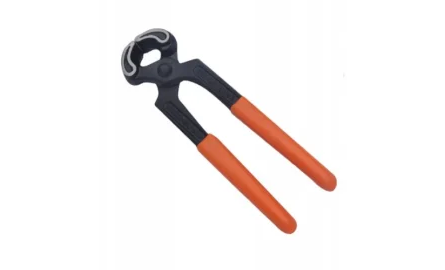Pliers and pincers are among the most used tools in any toolkit—whether you’re a professional tradesperson or a home DIY enthusiast. But despite their sturdy design, these tools can wear out or become inefficient if not maintained properly.
In this blog, we’ll share practical and effective maintenance tips to extend the life of your pliers and pincers, ensuring they continue delivering performance and precision for years.
1. Clean After Every Use
Dirt, grease, and metal shavings can quickly build up on pliers and pincers. After each use, wipe down the tool with a dry or slightly damp cloth. For heavy grime, use a mild degreaser. Whether you’re working with a cutting plier or gripping tool, this habit reduces corrosion and keeps your tools looking and performing like new.
Also Read: Difference Between Pincers and Pliers
2. Lubricate the Pivot Joint Regularly
The pivot joint is the heart of both pliers and pincers. Without proper lubrication, it can become stiff, leading to reduced efficiency and hand strain. Apply a drop or two of light machine oil or multi-purpose lubricant to the joint every few weeks, especially if the tool is used frequently or in dusty environments.
This is particularly important when working with different types of pliers, including long-nose, combination, or cutting pliers, as smooth operation ensures precise control.
3. Store in a Dry, Clean Place
Moisture is one of the biggest enemies of steel tools. Always store your pliers and pincers in a dry toolbox or hang them on a tool board. Consider using silica gel packs or anti-rust liners in your toolbox if you’re in a humid climate.
Also Read: Difference Between Pincers and Pliers
4. Inspect for Wear and Damage
Regularly check for signs of:
- Bent handles
- Dull cutting edges
- Cracks in the grip
- Loose pivot joints
Early detection can help prevent injury and prolong the tool’s life. Don’t continue using damaged pliers—it’s unsafe and can worsen the condition. Knowing the right way to use pliers and pincers also prevents unnecessary damage and extends the tool’s lifespan.
5. Sharpen Cutting Edges Carefully
If your pliers or pincers include cutting jaws (like side cutters or nippers), keep the edges sharp. Use a fine file or sharpening stone, but do it gently and evenly. Dull blades put more strain on the tool and user.
6. Use the Right Tool for the Job
Never use pliers or pincers as a hammer, pry bar, or wrench. Using them beyond their intended purpose puts unnecessary stress on the tool and reduces its functional life. Choose specialized tools for cutting, twisting, gripping, or pulling based on the task.
7. Handle with Care—Even Heavy-Duty Tools Need It
Avoid dropping your tools or leaving them in rough, cluttered workspaces. Even hardened steel tools can chip, crack, or get misaligned when not handled carefully.
8. Invest in Quality Tools for Long-Term Value
Even with great maintenance habits, the build quality of your tools plays a major role in their lifespan. High-quality pliers and pincers—like those from JCBL Hand Tools, a trusted Pliers & Pincers Supplier—are designed with premium materials, ergonomic grips, and tested durability to withstand daily use.
Final Thoughts
Maintaining your pliers and pincers doesn’t require much time or effort—but the payoff is huge. With just a few basic practices, you can protect your tools from rust, wear, and breakdowns, saving money and ensuring smoother workflow.
Whether you’re working on automotive repairs, electrical installations, or general DIY projects, your tools deserve care. After all, a well-maintained tool lasts longer, performs better, and keeps you safer.









